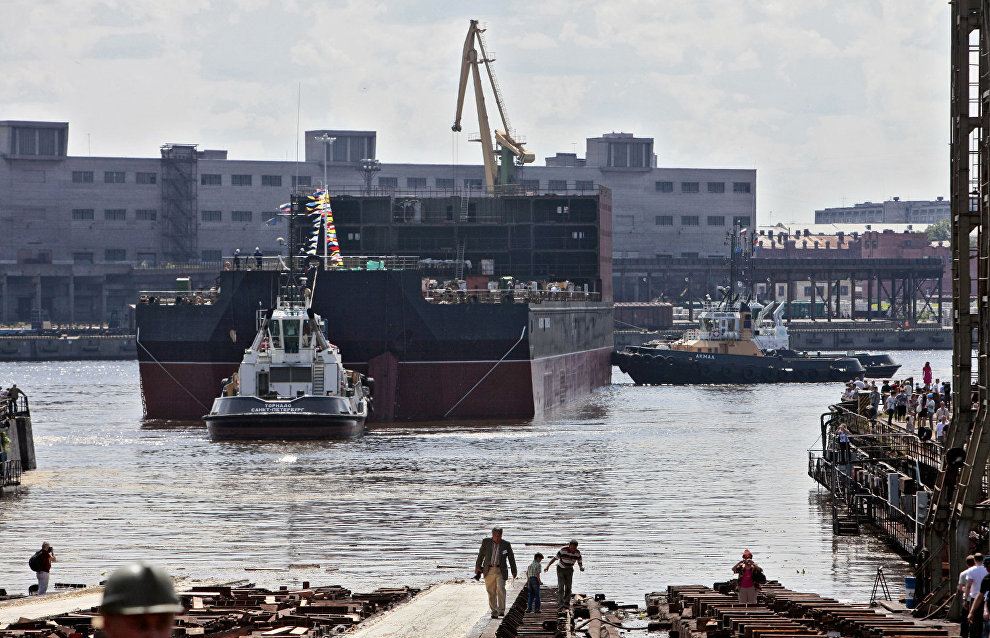Russian experts develop upgraded floating nuclear power station
Russian nuclear sector companies and the Iceberg Central Design Bureau have developed an upgraded floating nuclear power station and new operating protocols. This power station could help implement some Arctic development projects, Andrei Nikipelov, General Director of Rosatom's power engineering division Atomenergomash, told RIA Novosti.
Russian experts are now developing an experimental floating nuclear thermal power station based on the Akademik Lomonosov floating nuclear power station. The media reported that the initial project needed to be streamlined for mass-producing these floating power stations; this would help cut production costs and deadlines.
According to Nikipelov, Atomenergomash, other Rosatom companies, and the Iceberg Central Design Bureau are working on a streamlined floating power station. "This towed vessel will provide electricity for mines at mineral deposit sites, remote communities where electricity demand runs high and where diesel generators compensate for a shortage of power generating facilities. In the future, this station could become a reliable source of electricity for new facilities on the Arctic shelf," Nikipelov said on the sidelines of The Arctic: Territory of Dialogue international forum.
"We have completed the power station's technical specifications and a protocol for operations, and we can now enter into negotiations with prospective clients," Nikipelov noted.
The project compiles all the experience of developing the Akademik Lomonosov floating nuclear power station and also includes some innovations, he said. "The new vessel is to be equipped with the most advanced and smallest Rhythm-200M reactors with a total capacity of 100 megawatts. This boosts capacity by 30 percent, reduces station dimensions inside the protective shroud and reduces reactor weight by 33 percent," Nikipelov said.
This and other engineering solutions result in optimum specifications. Its length and beam are reduced by 30 meters and five meters, respectively. The vessel's displacement will decrease by 9,000 metric tons, and the station's service life will be extended 3.7-fold.
